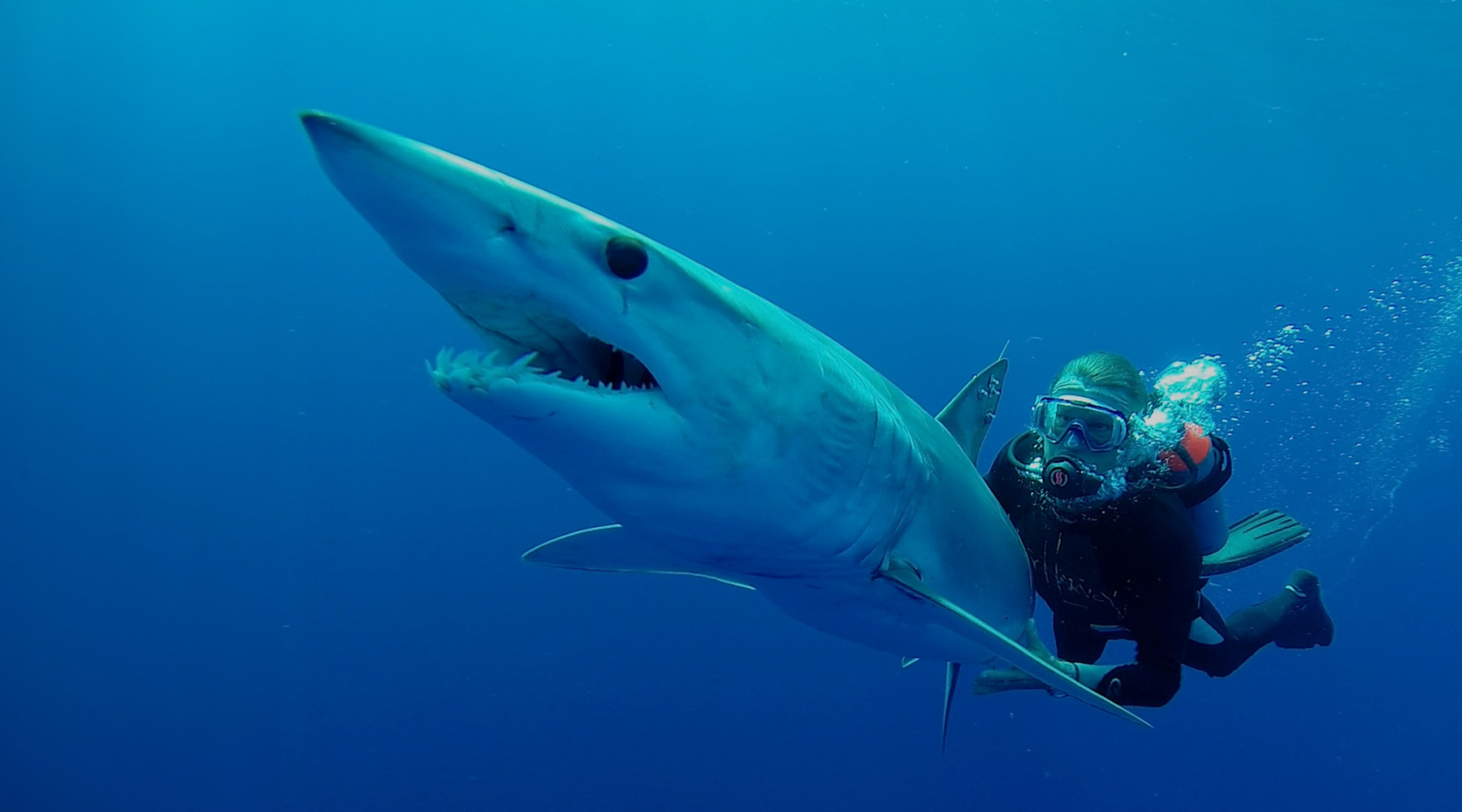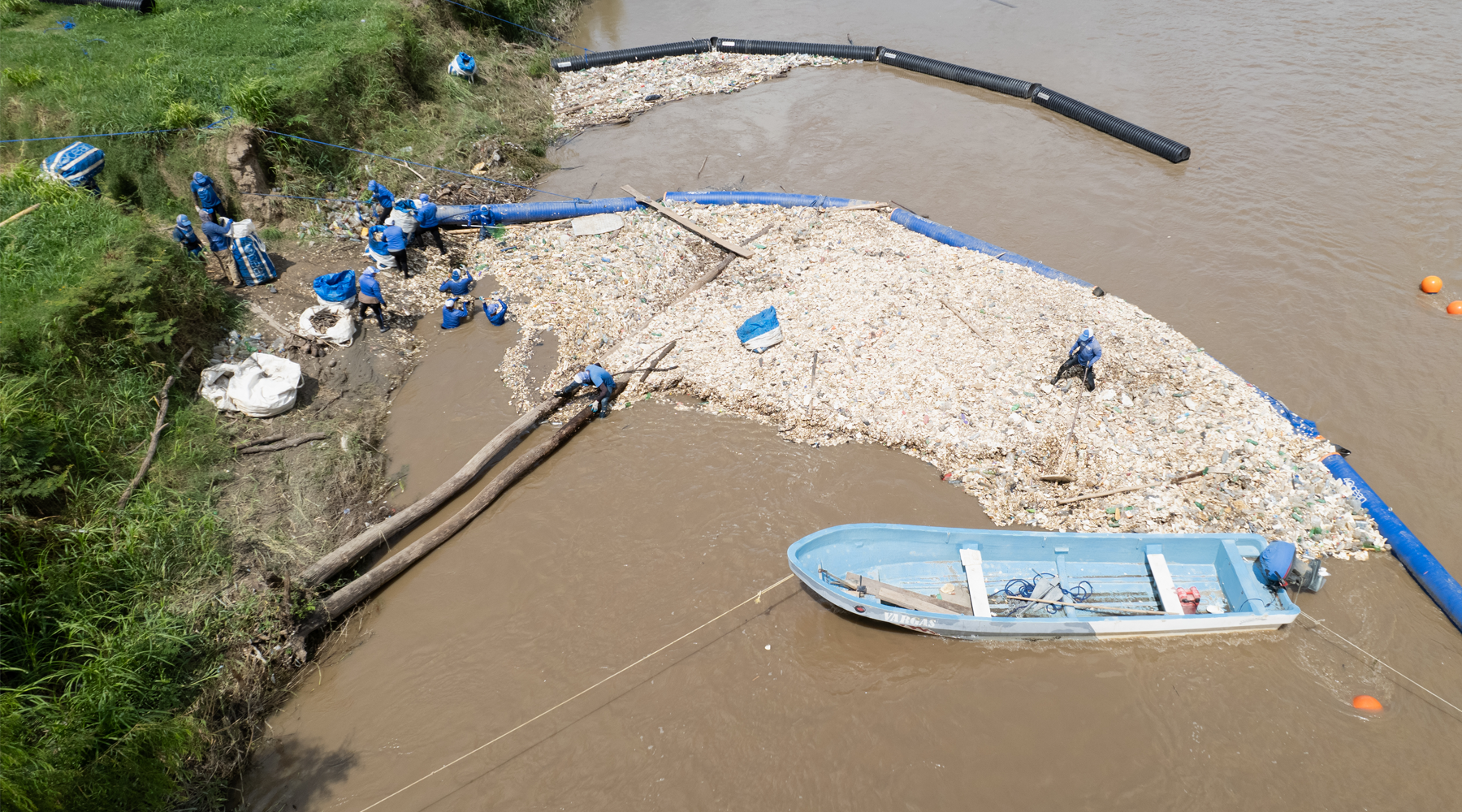
7 MIN READ
AUG-01-2024
Discovering Dolphins: Exploring the Wonders of the Ocean's Friendliest Mammals
Henry Bliss, 4ocean Story Producer
@oceanraysphotography
Embark on a journey beneath the ocean’s surface and learn more about our favorite mammal.
As the sun dips below the horizon, painting the sky with hues of pink and gold, you stand mesmerized by the tranquil beauty of the ocean. Suddenly, a ripple disturbed the surface, and a dolphin burst forth. Its sleek silhouette outlined against the fiery sunset. It leapt gracefully into the air, its movements fluid and serene, casting shimmering droplets in its wake.

Dolphins are a remarkable creature found in many different environments worldwide. Known for their intelligence and adaptations to their environment , these marine animals captivate scientists and enthusiasts alike. Here's an in-depth look at these majestic creatures:
Did you know that there are 42 species of dolphin?
HABITAT
Oceanic Dolphins:
Oceanic dolphins are found in a wide range of marine environments, from coastal waters to the open ocean. Their distribution is influenced by factors such as water temperature, salinity, depth, and prey availability.

Coastal Waters:
Coastal dolphins, such as the common bottlenose dolphin, are often found in warm and temperate waters.
These dolphins are common in regions like the coastal areas of the United States, Mediterranean Sea, and the shores of Australia.
Coastal habitats provide abundant food resources and protection from larger oceanic predators. Dolphins here may be seen in bays, estuaries, and even river mouths.
Coastal dolphins are more likely to interact with humans, making them frequent subjects of marine tourism and research.

Open Ocean:
Open ocean species, such as the spinner dolphin, can be found in tropical and subtropical waters.
These dolphins inhabit vast regions, including the central and western Pacific, Indian Ocean, and the Atlantic Ocean.
The open ocean offers a vast, dynamic environment with deep waters and strong currents. Dolphins here often travel long distances and dive deep to find food.
These dolphins have adapted to survive in deeper, more pelagic waters, often forming larger pods for protection and efficient hunting.

Polar and Subpolar Regions:
Species like the orca (killer whale) and the hourglass dolphin inhabit colder waters, including those near the Arctic and Antarctic.
These dolphins are found in the North Atlantic, North Pacific, and Southern Oceans.
Cold-water dolphins have adaptations to survive in icy waters, such as a thicker layer of blubber for insulation and a slower metabolism to conserve energy.
The prey in these regions includes fish, squid, and sometimes marine mammals, requiring dolphins to have varied and adaptable hunting strategies.

@evansbaudin
River Dolphins:
River dolphins are adapted to freshwater environments and are found in some of the world's largest river systems.
Amazon River Dolphin (Inia geoffrensis):
Found in the Amazon and Orinoco river basins, covering countries like Brazil, Peru, and Colombia.
These dolphins thrive in freshwater rivers, lakes, and floodplains. During the rainy season, they can navigate flooded forests.
They have long, slender beaks and flexible necks to maneuver through dense vegetation and capture prey in murky waters.
Ganges River Dolphin (Platanista gangetica):
Inhabit the Ganges, Brahmaputra, and Meghna river systems in India, Nepal, and Bangladesh.
These dolphins live in freshwater rivers and are adapted to low-visibility waters due to heavy silt loads.
They rely heavily on echolocation to navigate and find prey in the turbid waters, as they have limited eyesight.
Indus River Dolphin (Platanista minor):
Restricted to the Indus River in Pakistan and parts of the Beas River in India.
These dolphins inhabit freshwater rivers with slow-moving currents and deep channels.
Like their Ganges counterparts, they are highly adapted to living in murky waters, with a reliance on echolocation.
Araguaian River Dolphin (Inia araguaiaensis):
Found in the Araguaia-Tocantins river basin in Brazil.
This species lives in freshwater environments similar to the Amazon River dolphin, including rivers and floodplain areas.
Adaptations include flexibility to navigate flooded forests and diverse feeding strategies to exploit available prey.

INTELLIGENCE
Cognitive Abilities:
High level of problem-solving skills, self-awareness, and understanding of complex commands.
Tool Use:
Some species use sponges to protect their snouts while foraging on the seafloor.
Cultural Transmission:
Behaviors and techniques are learned and passed from one generation to another.
Social Structure:
Pods: Social groups that vary in size from a few individuals to over a thousand (superpods).
Social Behavior:
Includes cooperative hunting, communal calf-rearing, and strong social bonds.
Communication:
Methods:
Use a complex system of vocalizations including clicks, whistles, and body postures.
Signature Whistles:
Unique to each dolphin, functioning like a name to identify individuals.

INTELLIGENCE
Primary Foods:
Fish, squid, and crustaceans.
Hunting Techniques:
Includes sophisticated strategies such as corralling fish into tight groups or using bubble nets.
Echolocation:
Emitting clicks that bounce off objects, helping dolphins to navigate and hunt.

REPRODUCTION
Gestation Period:
About 10-12 months.
Calves:
Typically born tail-first to prevent drowning, and are dependent on maternal care for up to a year or more.
Breeding:
Can occur year-round, with variations depending on species and location.

LIFESPAN
In the Wild:
Generally 20-60 years, depending on the species. Smaller dolphins tend to have shorter lifespans.
In Captivity:
Often longer due to absence of natural predators and availability of regular food and medical care.Dolphins are among the most captivating and complex marine mammals, with their intelligence, social behavior, and conservation needs continuing to inspire and challenge both researchers and the general public.

ENVIRONMENTAL CHALLENGES
Pollution:
Dolphins face threats from water pollution, including chemical contaminants, plastic debris, and oil spills, which can affect their health and food supply.Major pollutants include industrial waste, agricultural runoff, and urban sewage.
Habitat Destruction:
Coastal development, deforestation, and dam construction can destroy or degrade dolphin habitats, particularly for river dolphins.Activities such as mining, agriculture, and urbanization contribute to habitat loss.
Climate Change:
Changes in sea temperature and ice cover affect prey availability and distribution, forcing dolphins to adapt or migrate.Rising sea levels and changes in freshwater flow can alter habitats, particularly for coastal and river dolphins.
Human Activities:
Fishing, shipping, and tourism can lead to habitat disruption and direct harm to dolphins.Fishing nets can entangle dolphins, while boat traffic can cause injuries or disrupt natural behaviors.

@oceanraysphotography
CONSERVATION EFFORTS
Marine Protected Areas (MPAs):
Establishing MPAs helps to protect critical habitats and reduce human impact.Areas like the Great Barrier Reef Marine Park provide safe havens for dolphins and other marine life.
Regulations and Legislation:
Implementing laws to regulate fishing practices, pollution, and coastal development helps to preserve dolphin habitats.The Marine Mammal Protection Act (MMPA) in the United States protects dolphins and other marine mammals from harm and exploitation.
Research and Monitoring:
Continuous research and monitoring help to understand dolphin populations, behaviors, and threats, informing conservation strategies.Satellite tracking and acoustic monitoring are used to study dolphin movements and communication.
Public Awareness and Education:
Educating the public about the importance of dolphins and their habitats fosters support for conservation efforts.Programs and campaigns by organizations like the World Wildlife Fund (WWF) and the Dolphin Research Center raise awareness and promote dolphin conservation.

HOW DOES PLASTIC IMPACT DOLPHINS?
Ingestion of PlasticMisidentification of Food
Dolphins often mistake plastic debris for food. Items like plastic bags, bottle caps, and small plastic fragments resemble their natural prey, such as fish and squid.Ingested plastic can cause internal injuries, blockages, and digestive problems. It can lead to malnutrition, as the plastic takes up space in the stomach, making dolphins feel full without having eaten nutritious food.
Entanglement in Plastic Debris
Dolphins can become entangled in discarded fishing nets, plastic straps, and other debris. This can restrict their movement, making it difficult to swim, hunt, and surface for air.Entanglement can cause severe injuries, such as cuts, infections, and even amputations of fins or tails. These injuries can lead to long-term health problems or death.
Impact on Habitat
Accumulation of plastic debris can degrade dolphin habitats, particularly in coastal and shallow water areas where dolphins forage and breed.
Tiny plastic particles, known as microplastics, can contaminate the entire marine ecosystem. These microplastics are ingested by smaller organisms, entering the food chain and ultimately affecting dolphins that feed on these organisms.
Fish and other marine animals that dolphins prey on may ingest microplastics, leading to bioaccumulation of plastics and associated toxins in dolphins’ bodies when they consume contaminated prey.
Dolphins are extraordinary animals that enrich the marine ecosystems they inhabit and inspire awe in humans. Preserving their populations and habitats is not only crucial for maintaining biodiversity but also for ensuring that future generations can continue to marvel at and learn from these incredible marine mammals. Through concerted conservation efforts and responsible environmental practices, we can help secure a thriving future for dolphins.
We’re always on the lookout for incredible stories from our community! Pitch yours to our team at stories@4ocean.com




